In this guide
Guide to buying the right customer insight platform
Guide to buying the right customer insight platform

In today’s competitive marketplace, providing an incredible customer experience isn’t optional; it’s expected. However, building a thorough understanding of the customer’s mindset—and delivering on their expectations—continues to be a challenge, even for leading organizations. Forrester reports that in 2022, customer experience (CX) quality dropped, with nearly twice as many brands experiencing a decrease in their CX scores as those who saw increases.
With CX continuing to pose a challenge to businesses, it can be a significant competitive advantage for any brand that can get it right.
So what’s best for your company to stand out as a customer experience leader? You can start by developing a deep understanding of what your customers need, think, and feel—and turning that insight into action.
And to do that, you need the right solutions, starting with a customer insight solution.
What you'll find in this guide
Understanding the value of a human insight solution is an essential first step in understanding your customers. Now it’s time to ensure you choose the right solution for your needs.
There are a lot of great products out there—each with its own benefits and weak spots—and no one wants to waste time and money purchasing a solution that goes unused. Leverage this guide to:
- Understand your current research approach
- Define what you need in a customer insight solution
- Evaluate your options
- Create a rollout plan
This guide will introduce some essential factors to consider before making your decision. You’ll be fully prepared to purchase and implement the right human insight solution for your organization by the end.
What's a customer insight solution?
Customer insight solutions are digital solutions or software that open the line of communication between organizations and their audience. The solution allows teams to capture qualitative and quantitative data such as polls, tests, discussion forums, surveys, interviews, and more. The data gathered can be wide-ranging and applied to an almost infinite list of experiential scenarios.
The best customer insight solutions facilitate a fast, accurate, and consistent data synthesis into insight. The faster and easier the customer feedback process becomes, the more agile and creative organizations can be.
The focus on customer experience isn’t going anywhere. If anything, it will increasingly permeate every corner of industry.
Use cases for customer insight solutions
Customer insight solutions give organizations a better solution for decision-making and can transform the efficiency of their feedback, design, and development processes.
By incorporating human insight into more areas of the customer journey, teams can increase their confidence in the strategy, risk prevention, and overall user experience.
Examples of improving customer experience by leveraging feedback include:
- Facilitating immediate stakeholder alignment with authoritative data
- Creating comprehensive customer profiles based on real people
- Validating marketing strategies before using budget
- Testing prototypes before launch
- Head-to-head comparisons with competitors
- Seeing a product in the real world before launch
- Quickly pinpointing and fixing problems in a user journey
- Confidently launching new features based on verified needs
How to know when it's time to buy a customer insight solution
Making customer insight a part of your team’s DNA as early as possible is a great insurance plan for future industry change. There’s no digital organization too small to benefit from a customer insight solution, and once a specific size is reached, growth becomes more challenging to sustain without one.
However, as Tony Robbins once said, “Change happens when the pain of staying the same is greater than the pain of change.” That may not be the best policy for making decisions, but it’s common for organizations to seek out a customer insight solution after experiencing prolonged friction.
Here are a few common signs that an organization is ready for a customer insight solution before things get difficult.
Slow decision-making
It’s easy for leadership teams to get bogged down when making important decisions. Meeting after meeting is held, options are listed over and over, opinions are aired, and still, nothing happens. Sometimes all it takes is one insight—one piece of hard evidence—to get stakeholders on the same page. When used effectively, customer insight solutions can be a game-changer for decision-making.
Customers are dropping off
If you can get customers through the door but can’t seem to keep them, there’s a blind spot in the customer journey. The only way to see that blind spot is with a customer insight solution that can give you real-time data.
Lack of validation
You could have the world's greatest product design and development team, but you need the ability to validate product ideas quickly to keep pace with customer expectations today. Having immediate access to relevant audiences who can interact with the product is vital. There’s no substitute for seeing how products or experiences perform in the real world—before launch.
Lack of infrastructure
Usability testing is exponentially more difficult and time-consuming without a dedicated solution. Teams can waste weeks building tests from scratch, seeking out testers, finding a way to compensate them, and manually synthesizing the data. By the time they’re done, thousands of dollars worth of time has been lost.
These are a few common challenges organizations face before seeking a customer insight solution. We’ll cover more benefits in later sections.
Understand your current research approach

To find the right customer insight solution, start by clearly understanding your organization’s current customer feedback solution and document any associated processes. This will help you and your team clarify exactly what you need and how it can be incorporated into your existing workflow.
Treat this like a project by first clarifying roles and responsibilities. Assign a project leader who’s responsible for the selection and implementation of the customer insight solution. Their job is to take charge of gathering feedback from stakeholders, documenting current processes, researching solutions, and presenting findings.
Important questions to answer
There are four areas to understand when evaluating your current research approach.
- Current use of research
- Quality of research
- Quality of insight
- Opportunities for improvement
Current use of research
Start by gathering relevant stakeholders and asking them to explain the current state of customer research. Here are a few essential questions to answer:
- What are examples of critical initiatives that use customer research to make decisions (feature launches, conversions, campaigns, services, etc.)?
- List all customer-facing initiatives that aren’t using customer research as part of their process.
Quality of research
The following important group of questions looks at the finer details of your research process to describe how it functions.
- Is your research process handled remotely or in focus groups?
- Is research a dedicated discipline, or does it occur as needed?
- Who performs the research?
- How many hours per week are dedicated to research by that team or person?
- Is there a research request process?
- How often is research requested?
Quality of insights
Understanding and documenting the insights gained from the current research process is helpful.
- Is the data quantitative, qualitative, or both?
- Does the data translate directly into insights?
- Who is responsible for insights, and is there a process in place?
- Are insights consistent and easy to share with the team?
- Do the insights lead to changes or good decisions?
- How long does it take to go from question to insight?
Opportunities for improvement
Once you’ve answered the previous questions, you should have a clear picture of areas where your research process could be improved. Make sure to record those areas so they’re not forgotten.
- What research solutions or resources need to be improved?
- What current research systems could be applied elsewhere?
- What research systems need to be modified or replaced?
- What teams or individuals could use their existing research processes better?
- What teams or individuals need to implement new research processes or solutions?
- What are the current roadblocks to smoother research processes?
- What is the current level of research value throughout the organization?
- What level of research understanding do department leaders currently have?
Define what you need in a customer insight solution

If the last section was about understanding what your research looks like now, this phase is about turning toward what you want your research process to become. Use the information from the previous phase to define exactly what solution is needed for your organization.
This decision will depend on how established your organization is, how your product development process operates, and which teams in your company will conduct customer research.
The following sections describe the different solution needs most common to teams of various sizes and structures. Every organization is different. These aren’t hard and fast rules, but you can use these descriptions to understand your situation and solution requirements better.
Mature organizations with multiple teams and products
Large organizations with multiple moving parts need a robust solution that can scale and be implemented in different departments.
Here are some everyday needs:
- An efficient way to get customer feedback at scale
- The ability to test a wide range of products, assets, and experiences—both digital and in-person
- A variety of research methods, from fast, unmoderated tests to in-depth video interviews with your target market
- Flexible recruiting options so you can conduct research with your target market, your customers, or any group you choose
- Collaboration solutions to share insights across teams
- Advanced analysis capabilities like click paths and AI emotion recognition
- Security and privacy compliance
Product, marketing, and ecommerce teams that have one or more existing digital products
Zooming in, different teams within large organizations have their own needs to be acknowledged.
For example:
- Fast delivery of research results that fit into your development process
- Benchmarking capabilities so you can track trends over time
- Omnichannel testing options
- High ROI on your research efforts
- Reliable support and resources
Startups or teams working on a new product
No team is too small to benefit from a customer insight solution. For startups, the right solution can cut hiring costs and speed up design and development cycles.
Everyday needs for these teams include:
- A cost-effective, efficient solution that’s easy to use without professional researchers
- Access to your target market so you can validate concepts and gauge product-market fit
- Wireframe and prototype testing abilities
- Fast results so you can iterate quickly
Use these examples to make your list of non-negotiable solution requirements. This will help you have better conversations with vendors when it comes time to buy.
Evaluate your options

Now that you’ve defined what you need, it’s time to find the vendor and solution with the right offering. As you research online and talk to different people, ensure you can attend each conversation with as much information about your organization as possible.
Be able to list your current pain points and paint a clear picture of the results you’re hoping to achieve with your customer insight solution. This will help vendors speak more specifically to your needs. The more you can tell vendors, the better equipped they’ll give you what you need.
Choose your top three vendor options, and schedule a demo with each. The demos will give you a hands-on introduction to each solution and allow you to get all your questions answered.
Consider these questions during your demos:
- Is the demo live? Screenshots may be a red flag that the product runs slowly or that there are areas of the product sales reps aren’t very knowledgeable about.
- Is there an option to set up a trial? Being able to test-drive the solution on your own will allow you to explore how easy it is to get up and running and experience the quality of insights you get from the study participants.
- How do they compare against other solutions? Sales representatives should be able to indicate which features and strengths are unique to that solution without becoming defensive or dismissive of the competition.
- What resources are available to help you get started? Keep an eye out for extra onboarding training, learning resources, and a highly-rated customer support team.
Seek partnership
You should view every vendor conversation as an interview. The customer insight solution you select will become an integrated part of your organization and grow with you. That’s why it’s essential to evaluate the product offering and look at the company’s service as a whole.
The right vendor will work with you to help you sell the customer insight solution to your team or leadership. Some can even provide resources and team members to help you communicate the solution's value, onboard, and implement it cross-functionally. You're ready to choose once you’ve seen demos, compared capabilities, and evaluated partnership potential.
Create a rollout plan

At this point, you should thoroughly understand your research needs and feel confident in your choice of customer insight solution. The final step is creating a rollout plan to forecast any obstacles and preemptively chart your way past them.
If you still need to get your organization’s leadership on board with the solution, having a rollout plan will be another helpful item you can present to them. For those who have already gotten the green light to purchase, you’ll still need a plan of action to ensure the true adoption of the solution to its fullest potential.
The right customer insights partner can work alongside you to provide consultation on best practices and pitfalls to avoid in creating, presenting, and implementing your rollout plan.
Creating the plan
A good rollout plan casts a vision for how the customer insight solution will help your company succeed and the steps that will be followed to make that vision a reality. Every organization will document and communicate the rollout plan differently. We’re providing some helpful ideas and prompts you can use to get the job done.
Packaging and presentation
When it comes to communicating a strategy, the importance of presentation can’t be overstated. Take some time to decide the most effective format for communicating your implementation vision. It could be a slide deck, a report, a meeting, a video, or maybe a combination.
The plan should be easy-to-understand, shareable, and compelling. Bring as much excitement as possible to the rollout by clearly and concisely communicating the problems it will solve for each team member or division involved.
Details to include in the rollout plan
You know your organization better than anyone, and you’ll know what details are most important to the rollout plan. But just to give you a starting point, we’ve provided some key points to cover.
- List the teams that will have access to the customer insights solution.
- Communicate with specific leaders who will be responsible for solution usage.
- Provide examples of studies you could run right now to see results.
- Lay out your goals for the customer insights solution.
- Explain how test results will be shared throughout the company.
- Describe how you will evaluate the success of research efforts.
Handling objections
Unfortunately, not everyone at your organization will be as over-the-moon as you are about learning a new platform. Making an ongoing investment in customer research may be a new concept to some, or you could have team members stuck in their ways. Friction is a natural part of change, but preparation can minimize it.
Here are some common objections we hear about
Objection: We don’t have enough researchers on staff.
Response: A complete customer insights solution can be used by anyone on the team, from product managers to marketers. Having a background in research isn’t required to use the solution effectively and get tremendous value out of customer research.
Related reading: How design teams embrace human insight
Objection: Our team is already overloaded.
Response: More insights may sound like more work, but they save you time and
resources. Collecting user feedback early and often will inform your decisions, preventing guesswork and saving on costly and time-consuming rework.
Objection: We have a tight budget.
Response: Investing in customer research helps organizations increase revenue, save valuable development time, and improve product and campaign outcomes—a 665% ROI over three years, according to Forrester.
Related reading: Secure your human insight budget
Use these examples to list potential objections and responses. This can be an extremely powerful step, particularly in presentations to stakeholders or team members. When you immediately speak to their questions before they can even ask them, it shows them that you’ve thought through everything.
Conclusion

Many leaders need to pay more attention to the preparation needed for a customer insights solution to be successful. If you follow the steps in this guide, you’ll be fully prepared to make the right choice and build a robust research foundation within your organization.

Unlock your customer insight ROI
Discover the hidden ROI of your customers' insights. Book a meeting with our Sales team today to learn more.


